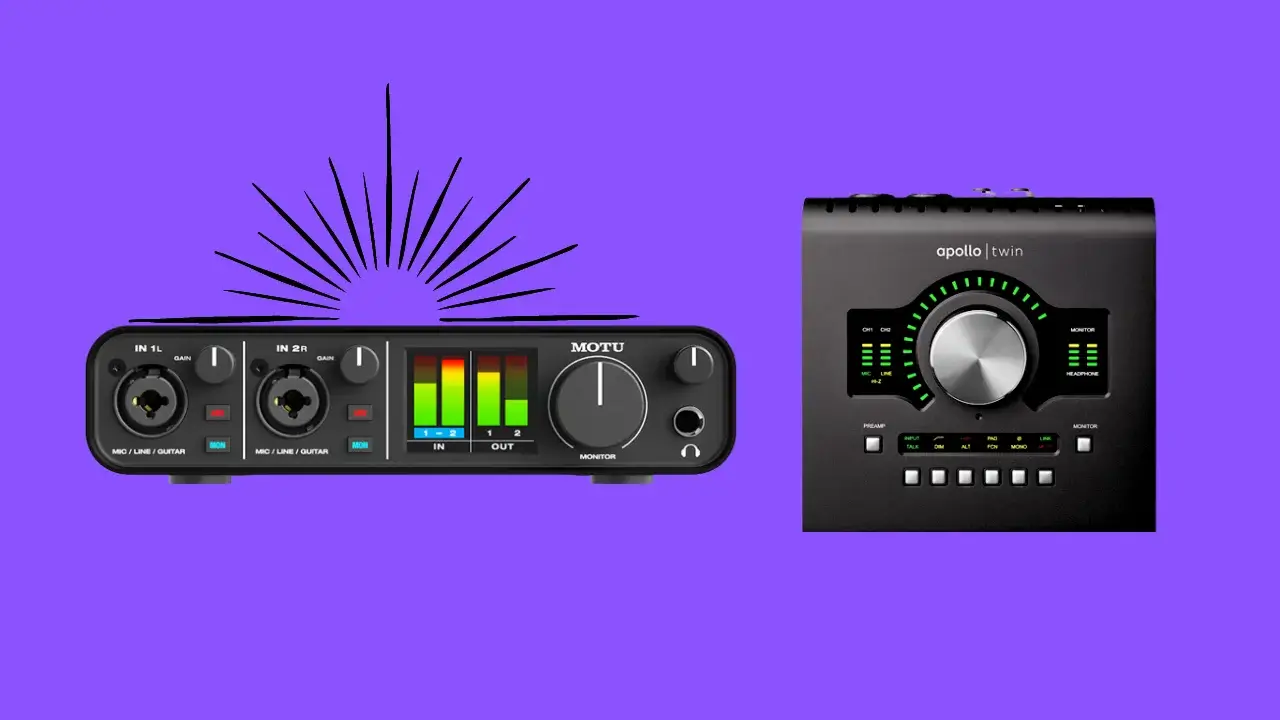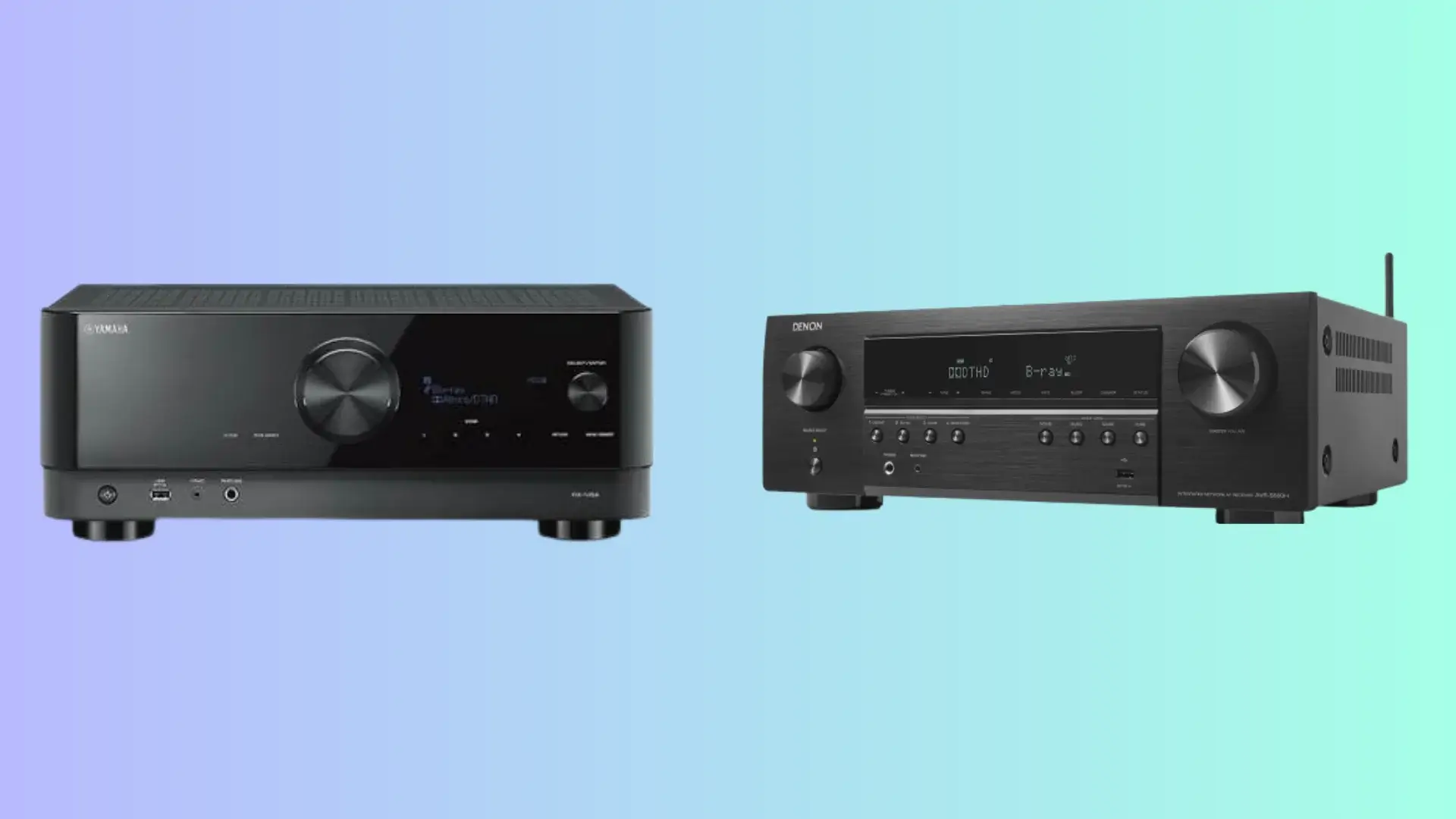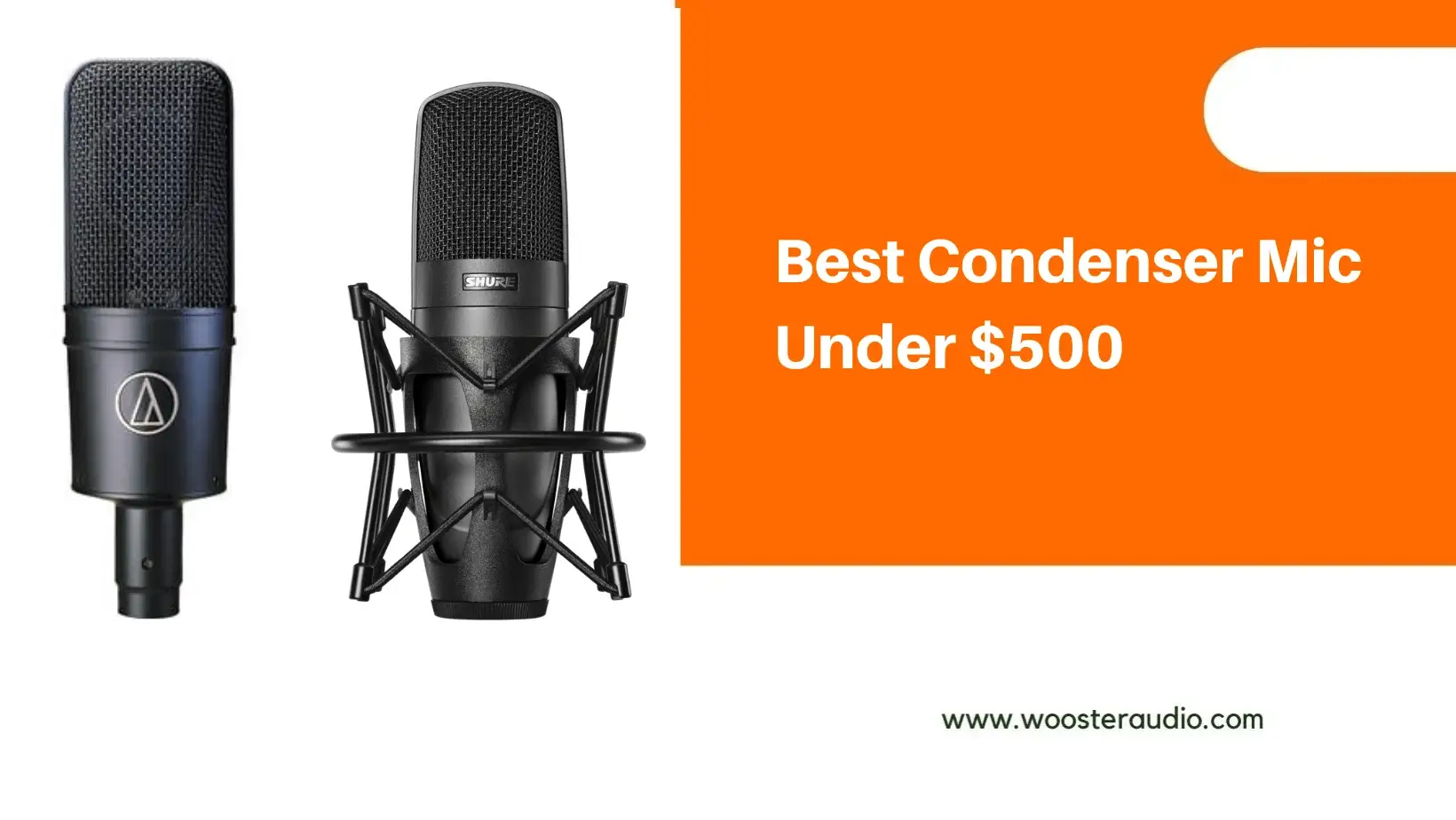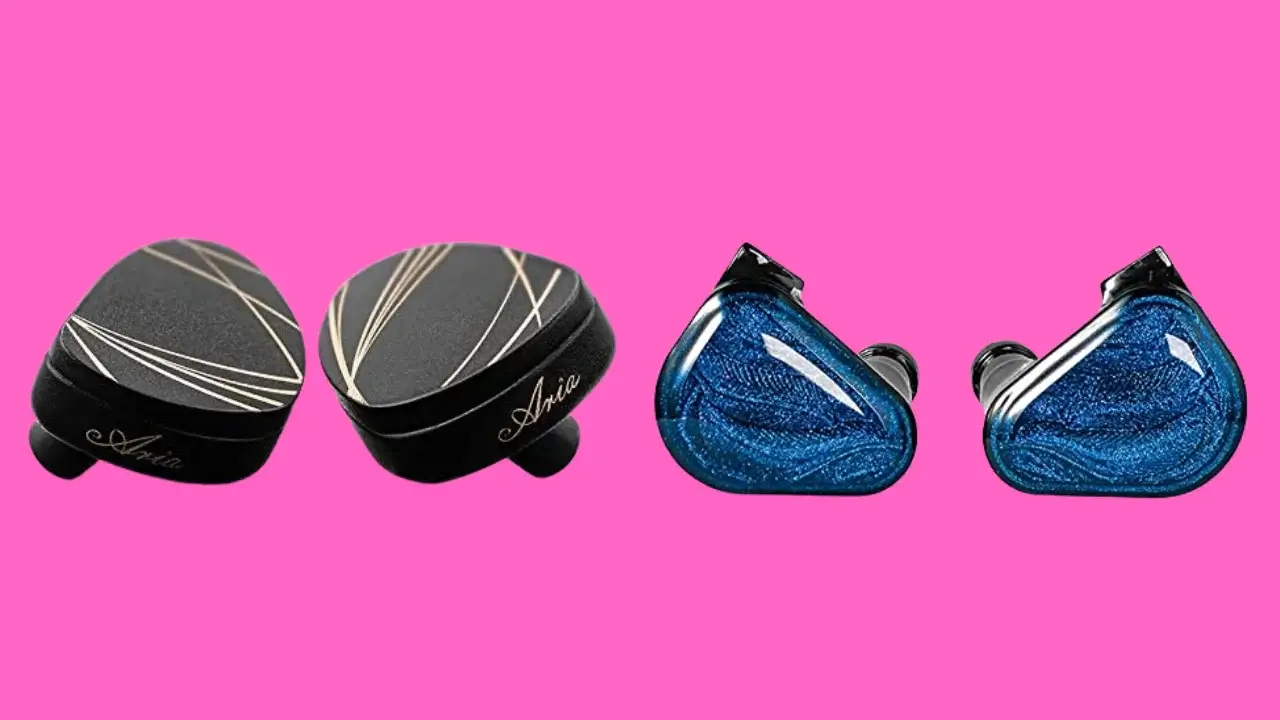The Shure SM7B dynamic microphone is a popular choice for broadcasting, podcasting, and music recording. It boasts a smooth, warm tone that works well with spoken word and voices, as well as a switchable bass roll-off and mid-range boost to assist adjust the sound to different sources.
Because the Shure SM7B microphone has a low output level, it requires a high-gain preamp to ensure the best performance. A strong preamp and a high-quality audio interface can give the required gain to bring out the full capability of the microphone and catch all the intricacies of the sound source.
Entry-level interfaces cost less than $100, while mid-range interfaces are priced at $200-500, and high-end interfaces for $1000 or more. A decent interface with suitable gain for the SM7B and low noise levels will be best for you and cost between $200 and $300.
Topic: Grab Boom Arm for HyperX quadcast
Best Audio Interface For Shure SM7B Vocal Microphone Summary
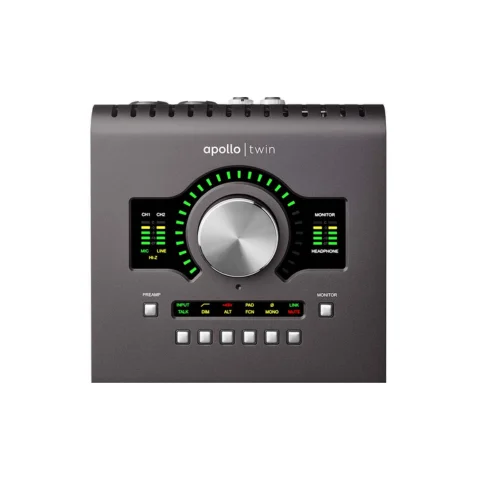
|
Universal Audio Apollo Twin Read More | See On Amazon |
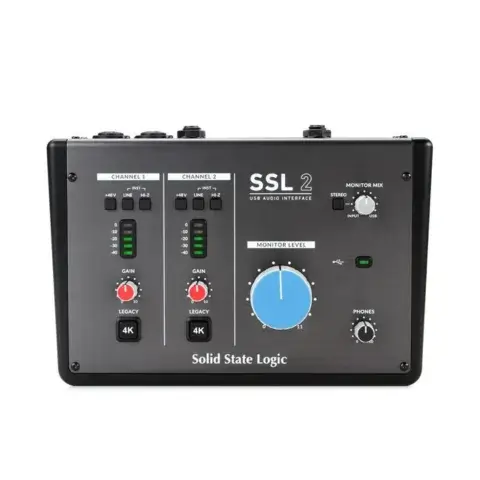
|
Logic SSL2 Read More | See On Amazon |
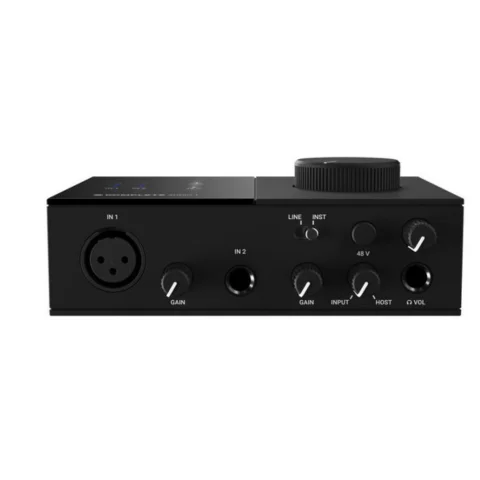
|
Native Instruments Komplete Audio 1 Read More | See On Amazon |
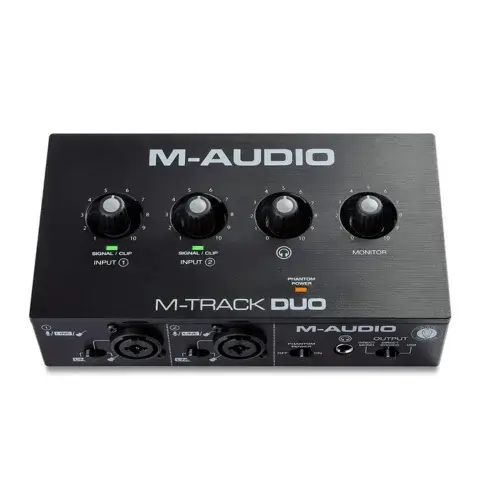
|
M-Audio M-Track Duo Read More | See On Amazon |
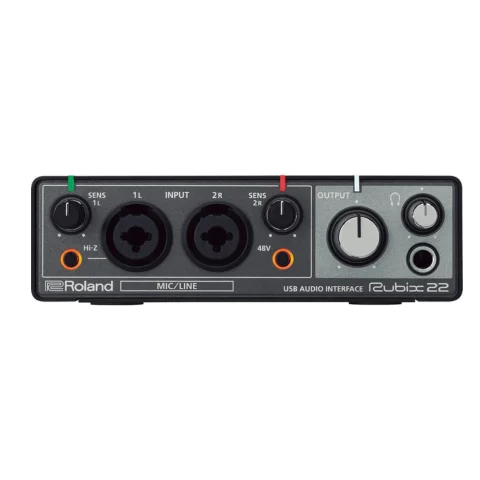
|
Roland Rubix 22 Read More | See On Amazon |
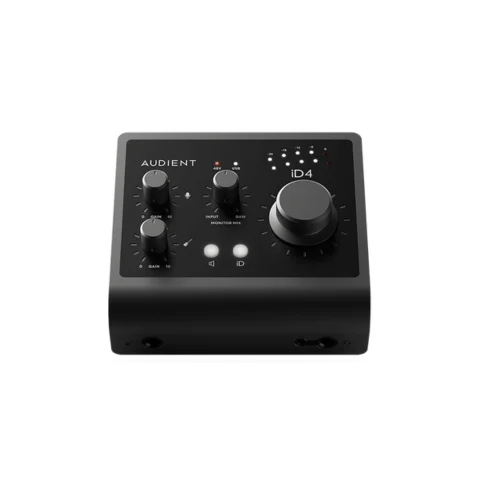
|
Audient iD4 MKII Read More | See On Amazon |
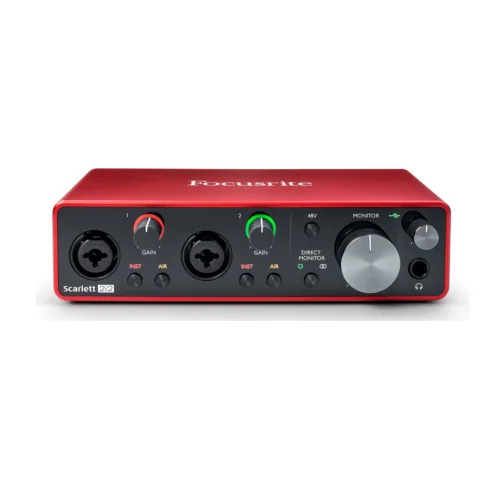
|
Focusrite Scarlett 2i2 Read More | See On Amazon |

|
MOTU M2 Audio Interface Read More | See On Amazon |
Best Audio Interface For Shure SM7B Vocal Microphone Reviews
Universal Audio Apollo Twin
View on Amazon Read Customer Reviews
Review number one is off Universal Audio Apollo Twin, which is the ambition standard for studios of any size, whether professional or home. This analog-designed Apollo Machine set comes in black color, and below there are four rubber feet, and it features prime components. There are eight buttons on the front that control the preamp, input talk, dim light, +48V ALT, PAD FNC, link mute, and monitor functions.
I found all connections are on the back side of the Apollo audio interface, including Optical input, 12V Dc adapter connection, Monitor (L and R), Line output (3 and 4), Two Mic/Line connections, and headphone output as well as an ON/OFF switch.
The Apollo Twin provides 24-bit/192kHz A/D and D/A converters, as well as two Unison-enabled mic preamps that furnish classic analog sound. With Unison technology, you can match an exhaustive array of microphone models, including the Shure SM7B, with unsurpassed realism and accuracy. Using the Apollo Twin, you can monitor your recordings and listen to them in real-time with near-zero latency. By doing so, a more comprehensive range of creative decisions can be made during recording, and mixing and mastering can be carried out more accurately.
Those curious about maximizing the grade of their audio recordings will benefit particularly from the real-time UAD processing offered by the Apollo Twin. We found several high-quality analog plug-ins available as part of UAD processing, which emulates classic studio hardware. Proffering the best of both worlds, the Apollo Twin features two premium Unison-enabled mic preamps, avant-garde monitoring capabilities, and real-time UAD processing.
To summarize, the Universal Audio Apollo Twin is a remarkable audio interface equipped with a wide range of incredible characteristics. Aside from its Unison-enabled preamps and progressive monitoring tools, the Apollo Twin offers real-time UAD processing that makes your recordings sound more promising than ever.
Logic SSL2
View on Amazon Read Customer Reviews
Now we will do a Logic SSL2 review which is also a flawless recording and playback audio interface for instrumentalists and producers. You can record in any backdrop using the Logic SSL2, which comes with two renowned Focusrite mic preamps, two guitar inputs, a single headphone output and USB connection, and a suite of professionally-developed software.
As well as being compact and robust, the Logic SSL2 comes in black, with an easy-to-transport and setup design and simple controls for easy adjustments. You will find the Logic SSL2 audio interface prominent for superior large-format consoles as it has 24-bit/192 kHz converters and Neutrik connectors for better connection.
Personally, when I tested Logic SSL2 in the Wooster audio lab, I found that the front panel design is much user friendly and the meters are easy to read, and the body is elegant and has attractive chassis.
As well as built-in effects, the Logic SSL2 also includes a MIDI interface, making it easy to expand your setup. Regardless of your skill level, the Logic SSL2 is the best audio interface for Shure SM7B microphone.
Native Instruments Komplete Audio 1
View on Amazon Read Customer Reviews
The dream of all creators is to have a high-performance audio interface, so here is the Native Instruments Komplete Audio 1 review, which, under $200, gives you a bunch of features.Now I will look at Native Instruments Komplete Audio 1 features which, as compared to M-Audio M-Track Duo, is also a 2-channel audio interface.
With a combination of 2-in/2-out USB audio, preamp for mic including Shure SM7B, and a range of studio-grade effects. After observation, I found this Native audio interface has a bunch of connectivities, including Two inputs which are XLR for your mic and jack input with gain control. On the other hand, two outputs, Stereo RCA and Headphones, are also available.
Komplete Audio 1 gives you a complete recording and production package and drivers 192 kHz and 24-bit audio quality and also you will find a big volume knob and VU-meter for adjustments level.
The Komplete Audio 1 interface uses little time and is easy to use, with a user-friendly interface having intuitive controls. With powerful effects, you’ll have a lot to choose from in Komplete Audio 1, such as reverb, delay, and chorus, so adding effects can make recordings more memorable and punchy.
There are three 3 Studio-Grade FX which are:
- REPLIKA: For Great Delay
- PHASIS: Creative phaser
- SOLID BUS COMP: Sound quality
So overall, as compared to Apollo Twin and Logic SSL2, the Komplete Audio 1 by native is also the best audio interface for Shure SM7B microphone, so no matter if you are a neophyte or a seasoned pro, you can clutch this audio interface now.
M-Audio M-Track Duo
View on Amazon Read Customer Reviews
A portable, all-in-one solution, the M-Audio M-Track Duo is an outlandish audio interface for producers, recording engineers, and songwriters alike. The M-Audio M-Track Duo is a two-channel interface specially designed for noise-free, high-resolution audio. In addition to two combinations of XLR-1/4" inputs that let you to connect microphones, instruments, and line-level sources, the M-Track Duo has USB-C connectivity, so any computer or laptop can use it so it can be fully powered by USB completely.
Drum machines and digital pianos can effortlessly be connected to it since it has a switch that can connect line-level and instrument-level inputs, and if you have a Shure SM7B microphone, then you can also connect with it.
The M-Audio M-Track Duo audio interface also boasts two high-quality microphone preamps, each with up to 60 dB of gain. These preamps allow you to catch pristine vocal and instrument performances with a wide dynamic range. Additionally, the M-Track Duo’s direct monitoring feature allows you to hear your rendition in real time without any latency or delay.
The M-Audio M-Track Duo also provides two balanced outputs so that you can connect studio monitors or mixers, and also you will locate an independent headphone output so that the signal can be skillfully routed to headphones this way. Plus, the M-Audio M-Track Duo comes with a host of software and plugins, so you can presently start recording and mixing.
So overall, the M-Audio M-Track Duo not only has a slight and compact design but also delivers 48 kHz audio resolution and also features (phantom power) two combo Crystal Preamps.
Roland Rubix 22
View on Amazon Read Customer Reviews
Are you Interested in a smaller audio interface for your Shure SM7B? Here is Roland Rubix 22, which is not only slim but also more budget-friendly. What makes Roland Rubix 22 great for musicians and producers? We will discuss this in this small review.
Basically, Roland Rubix 22 audio interface has a similar design if we compare it to the M-Audio M-Track Duo in design and is made of solid build quality. The design contains a metal-constructed body with a low-noise design. On the front and back design of Roland Rubix 22, you will find lots of helpful options which any audiophile demands, including two inputs and two outputs, including two low-noise mic preamps that contain XLR combo jacks, Hi-Z input and MIDI In/Out port.
With two high-quality mic preamps, two line inputs, two headphone outputs, and four independent outputs, the Rubix 22 will help you for recording Instruments and vocals easily in 24-bit/192kHz audio resolution.
The audio interface Roland Rubix 22 gives you low-latency Universal USB support and also contains a suite of free software, including Cubase LE and Waveform OEM. With its highly portable nature, the Roland Rubix 22 can be taken virtually anywhere.
Overall this audio interface named as Roland Rubix 22 not only features an intuitive layout and straightforward controls but also is for those who want a reliable audio recorder that’s capable; this is a great option.
Audient iD4 MKII
View on Amazon Read Customer Reviews
After Roland Rubix 22 here comes the Audient iD4 MKII Audio Interface which you can also grab under budget range. The Audient iD4 MKII is equipped with a single Audient’s discrete microphone preamp (68 58 dB) and has dynamic range of 126 dB delivering pristine sound quality.
The Audient iD4 MKII has two Class-A JFET instrument inputs, providing a low noise floor so I recommend this to guitarists. The Audient iD4 MKII has two balanced line inputs, perfect for connecting synthesizers, drum machines, and other line level sources.
The Audient iD4 MKII is equipped with two outputs which are switchable to monitor or headphone outputs so with this feature you can configure your own monitoring setup. With the USB port of iD4 MKII interface you can connect it with Mac Mini and Pcs. It also offers a range of digital features.
The design of Audient iD4 MKII Audio Interface also contains a large volume knob on the front, allowing simple level adjustment without digging into software. Playback and recording are also easy with one touch, As a result, you can begin recording immediately. In summary, the Audient iD4 MKII offers a wide array of useful features, any kind of audio needs can be met with it, making it an excellent choice.
Focusrite Scarlett 2i2
View on Amazon Read Customer Reviews
After Komplete Audio 1, here is Scarlett 2i2 review, which has a bit stylish look. If we look at the design, then Scarlett 2i2 has a red and black color combo and features a beautiful chassis and size is much smaller, so you can put it on your table beside your Mac mini laptop. On the front of Scarlett 2i2, there are Knobs, modes and connectivities for:
- Two 3rd gen mic preamp
- Air mode (for instruments)
- Direct monitoring Mode (For zero-latency hearing)
- More
Wheres On the back side of Scarlett’s 2i2 body there:
- Type-C, USB 2.0 connection (Pc and Mac)
- Line outputs (Balance monitor outputs)
The Scarlett 2i2 also offers two combination inputs so people having Shure SM7B and instruments can do recording simultaneously. The Scarlett 2i2 offers Two outputs of low-noise balanced (for clean audio recordings). Furthermore, there are mic preamps, two high-headroom instrument inputs (for bass and guitar) and Gain Halos so you can record more accurately.
This Scarlett 2i2 audio interface allows you up to 24-bit/192kHz of recording and mixing.So under the $200 range, this Scarlett 2i2 has an intuitive design and easy-to-use interface, so a superior sound experience is ensured.
MOTU M2 Audio Interface
View on Amazon Read Customer Reviews
Last but not least, after Audient iD4 MKII now, we will review the Motu M2, which is the highest-quality audio interface available. With two custom preamps, 24-bit/192kHz resolution, and an ultra-low latency design, the MOTU M2 is a powerful tool for the serious musician or audio producer.
The M2 features two XLR inputs and four 1/4-inch TRS outputs, allowing for up to 16 simultaneous input and output channels. As compared to Audient iD4 MKII, the MOTU M2 also includes a USB Type-C connection which you already know how to use.
The MOTU M2 also offers full MIDI I/O, a low-noise headphone output, and both balanced and unbalanced outputs for setting up professional studio equipment. What makes the design different of Motu M2 as compared from other reviewed audio interfaces is the Full-color LCD screen which you will find on the side of the Big controlling knob.
With its intuitive control panel, 6+GB of free loops,2-in/2-out, 120dB DR, drivers for both Mac and PC and a comprehensive set of features, the MOTU M2 Audio Interface is the best audio interface for Shure SM7B.
Quick Buying Tips
The audio interface can make or break your recording experience. Here are some buying factors you must understand before getting an audio interface.
Compatibility
While getting a microphone, make sure its audio interface is compatible with the operating system and ports of your device. The most common options are USB, Thunderbolt, and Firewire. If you are someone who is recording multiple tracks at the same time, Thunderbolts and Firewire are the best options as they can give you fast data transfers.
Inputs and outputs
Consider checking how many inputs and outputs you require for your recording setup. Your inputs include different instruments and microphones to record multiple tracks simultaneously while outputs will be headphones, monitors, lines, etc.
Sample rate and bit depth
The sample rate and bit depth of your microphone determines the accuracy of audio recording and quality. You can get better audio recording quality if your microphone has a higher sample rate and bit depth. You should not, however, buy a microphone with a sampling rate of less than 96 kHz and a bit depth less than 24 bits.
Preamps
Preamps in audio interfaces utilize low-level analog signals to elevate them to the required line level. The preamp on the audio interface should be of high quality, providing enough gain to the SM7B. You should seek for interfaces that have a preamp gain of 60dB or more.
Latency
The delay between when a sound is captured and when it is played back through the interface is known as latency. Lower latency is preferable for recording and monitoring since it reduces delays and keeps everything in sync. You must consider interfaces with low latency, which is often measured in milliseconds.
Price
Typically, a good microphone can cost you anywhere between a few hundred to a thousand dollars. Of course, the more, the better but if you are on a budget, it’s good to check what suits you best within your budget.
How did we lab test these best audio interfaces for Shure SM7B?
To ensure you get the best result from our listed Audio Interface for Shure, we conducted different tests in detail that you can check below:
Set up the audio interface
We test the audio interface in the lab by connecting the necessary inputs and outputs to check the compatibility of the Audio interface for Shure. We also considered installing different drivers and software required for audio recording.
Tested input signal
To verify the audio interface for noise and distortion, input signals are checked by playing various sounds and noises. Our mentioned audio interface passes the comprehensive clarity test.
Output signal
Output signals of the audio interface were tested by playing tones and sounds through output means such as speakers and headphones to check for clarity or noise.
latency Test
We checked the latency for our audio interface by measuring the delay between input and output signals. All of them were passed with low latency as no noticeable delay was recorded.
Compare results:
After conducting different tests, we compared our results to the specifications mentioned by manufacturers for any differences. All the features mentioned were accurate.
Frequently Asked Questions
How to connect the Shure SM7B mic to the audio interface?
To connect a Shure SM7B microphone to an audio interface, use an XLR cable to connect the mic to the input on the interface labeled “mic” or “XLR.” Turn on phantom power, adjust the gain level, and test the microphone to ensure a strong, clean signal.
How does the audio interface work?
The audio interface is connected to your computer as an external device to convert analog and digital signals. Your microphone records analog signals and the audio interface transform them into digital signals for processing. After processing, the audio interface again transforms digital signals to analog signals so they can be played through your output devices.
